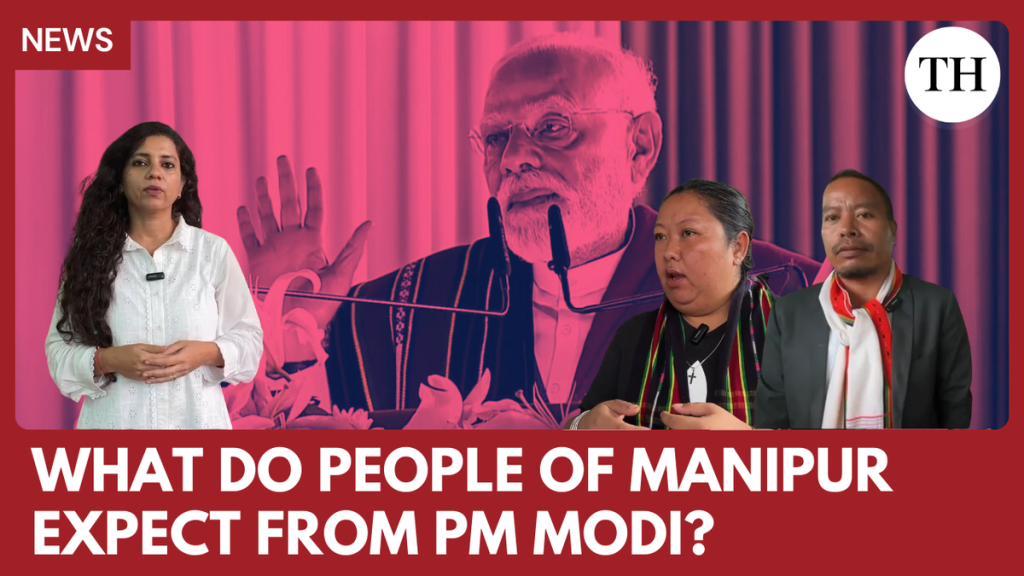Now Reading: Classic Films Screenings May Help Revive Struggling Cinemas
-
01
Classic Films Screenings May Help Revive Struggling Cinemas
Classic Films Screenings May Help Revive Struggling Cinemas

Swift Summary
- The article discusses the author’s experiences and opinions about revisiting old movies at cinemas.
- It reflects on how watching older films in theaters offers a unique viewpoint compared to home viewing.
- The piece emphasizes the nostalgia and communal experience of cinema-going, especially for retro or classic films.
Indian Opinion Analysis
Revisiting classic movies in theaters can resonate strongly with Indian audiences, where cinema is deeply rooted in cultural identity. India’s rich film history, from Bollywood classics to regional masterpieces, mirrors this sentiment. As multiplexes increasingly screen older titles during special events, it could rejuvenate interest among young viewers while creating intergenerational shared experiences. Such efforts could also encourage preservation of India’s cinematic heritage and foster thankfulness for storytelling beyond contemporary trends.
Read more: Insert source URL here.
Quick Summary
- No discernible content from the raw text provided. The article appears blank or inaccessible, with no factual information, quotes, images, or relevant data within the source.
Indian Opinion Analysis
It is indeed unclear what topic or event was intended for coverage in this piece due to absent information. Ensuring accessibility and content visibility is critical to preserving the integrity of journalism and providing reliable updates for readers. If this is a technical issue or oversight, prompt correction and reposting of accurate details are necessary for maintaining audience trust.
Read More: Unfortunately, there is no visible link or further details available as per the provided input.
Quick Summary
- Cinema attendance is reportedly in decline, as highlighted by recent data from the LA Times.
- The rise of streaming platforms and diminishing use of physical rental businesses or media are cited as factors behind this trend.
- Many people are now visiting cinemas for older movies rather than new releases due to convenience, cost, and shorter gaps between theatrical runs and streaming availability.
Indian Opinion Analysis
the decline in global cinema attendance signals a notable shift towards digital consumption of entertainment. For India, which boasts one of the most vibrant film industries globally, this development could have profound implications. Despite streaming growth, cinemas in india remain central to urban culture and serve as critical spaces for community entertainment. A sustained slide could prompt innovative approaches-such as showcasing older films-to adapt to audience habits while preserving the traditional movie-going experience. Streaming services may need to intensify partnerships with local filmmakers ensuring creative diversity thrives amid shifting dynamics.
Quick Summary
- Streaming giants like Netflix and amazon are increasingly controlling the production and distribution of films.
- These platforms prioritize exclusive content to grow subscriber bases rather than theatrical releases.
- Theaters face reduced film availability and a shortened window between theatrical runs and streaming accessibility.
- DC’s 2025 Superman movie exemplifies this trend, with only one month in theaters before being made available for home rental.
Indian Opinion Analysis
The dominance of streaming platforms reshaping global cinema has potential ramifications for India’s vibrant film industry, known for it’s strong tradition of theatrical releases. This shift could challenge Indian producers reliant on extended box-office runs. Though, it also opens opportunities to cater to global audiences via direct digital releases, bypassing traditional distribution challenges. Cinemas may need innovative strategies-such as eventized screenings or exclusive deals-to remain competitive in an evolving landscape increasingly controlled by streaming models.
Read more: Superman Movie InfoQuick Summary
- Director: James Gunn.
- Writers: James Gunn.
- Producers: Peter Safran.
- Executive Producers: lars P.Winther, Nik Korda.
- Franchise: DCU (DC Universe).
- Main Genre: Action.
- Distributor: Warner Bros. Pictures.
Additional Commentary: Local cinemas are adapting to challenges such as rising costs and thinner profit margins by hosting “throwback” screenings of classic movies. This business model enables leveraging nostalgia, offering films like The Terminator, Gremlins, and Back to the Future. In some cases, these screenings support the release of upcoming sequels by reintroducing earlier movies in the franchise to theaters.
Indian opinion Analysis
India’s cinema industry shares similarities with global markets in terms of economic pressure on single-screen theaters and multiplexes facing diminishing attendance due to streaming services or price-sensitive audiences.Initiatives like “throwback” screenings may serve as a potential lesson for Indian cinema owners who face similar constraints. Nostalgia-driven programming could attract viewers back into seats while creating an emotional bond with movie-goers featuring classic Bollywood or regional blockbusters.
Further adoption could involve combining traditional fare like Sholay or early Shah Rukh Khan hits alongside modern blockbuster previews-a creative possibility for Indian distributors and exhibitors alike amid competitive entertainment landscapes.
Read more: [Source link not provided]Quick Summary
- The Terminator (1984) directed by James Cameron features a prominent cast including Arnold Schwarzenegger, Linda Hamilton, and Michael Biehn. The movie had a runtime of 108 minutes and is classified mainly as a Thriller.
- Writers of the film include James Cameron, Gale Anne Hurd, and William Wisher, while producers were Gale Anne Hurd and John Daly.
- The article highlights retro screenings of classic movies like The Terminator, with ticket prices reduced to $3 in some places for the cinema experience.
- These screenings allow individuals who missed original runs due to age or availability restrictions an opportunity to enjoy iconic films in theaters-even though most have seen high-quality home versions of these on Blu-ray or streaming platforms.
Indian Opinion Analysis
Reintroducing influential films such as The Terminator for theatrical screenings aligns with global trends celebrating nostalgia-based entertainment experiences.For India-where cinema forms an integral part of its cultural identity-screenings like these could spark similar initiatives domestically for popular classics from Bollywood or regional industries such as Tamil, Telugu, and Bengali cinema.
such ventures may serve multiple purposes: rekindling cinematic appreciation among younger generations unfamiliar with older formats while promoting social intergenerational engagement through shared heritage storytelling in public spaces. Economically priced tickets also help foster inclusivity-a critical consideration amid rising movie theater costs globally-and ensure access across wider socioeconomic strata.For more about the originals screening trend: Read Morequick Summary:
- Movie title: Avatar: The Way of Water
- release Date: December 16, 2022
- Runtime: 192 minutes
- Director: James Cameron
- Cast Includes: Sam Worthington, Zoe Saldana, Sigourney Weaver, Stephen Lang, Kate Winslet, and others.
- Writers: Amanda silver, James Cameron, Josh Friedman, Rick Jaffa, Shane Salerno.
- Producers: Jon Landau.
- Genre: Adventure.
- Prequel(s): Avatar (2009).
- Sequel(s): Avatar: Fire and Ash (upcoming).
- Franchise(s): Avatar series.
- Budget: $350 million.
!Read hereQuick Summary
- The article discusses older movies and their “cinematic” appeal, emphasizing the experience of watching them on a big screen in a dimly-lit theater.
- The author contrasts this with modern movies, which they feel are less cinematic overall.
- Two recent films mentioned as must-see in theaters include Dune: Part II and Avatar: The Way of Water.
- For the author, most newer films are acceptable for viewing on smaller home devices like OLED TVs.
Indian Opinion Analysis
The article sheds light on the enduring charm of older films and the evolving nature of cinema-going preferences. This sentiment highlights a broader shift in global entertainment consumption patterns,with many viewers opting for streaming devices rather than traditional theater experiences.India is witnessing similar changes as OTT platforms dominate urban entertainment landscapes while multiplex chains work to maintain footfall by promoting large-scale cinematic spectacles like RRR or Bollywood blockbusters.
For Indian audiences, nostalgia-driven marketing strategies could bring renewed interest to classic Indian cinema if effectively leveraged by distributors or streaming platforms alongside theatrical re-releases akin to Hollywood classics. Moreover, the preference for immersive theatrical experiences showcased here underpins opportunities within India’s growing luxury cinema segment aimed at enhancing emotional connection through grand formats-a niche yet promising field globally and domestically alike.

























